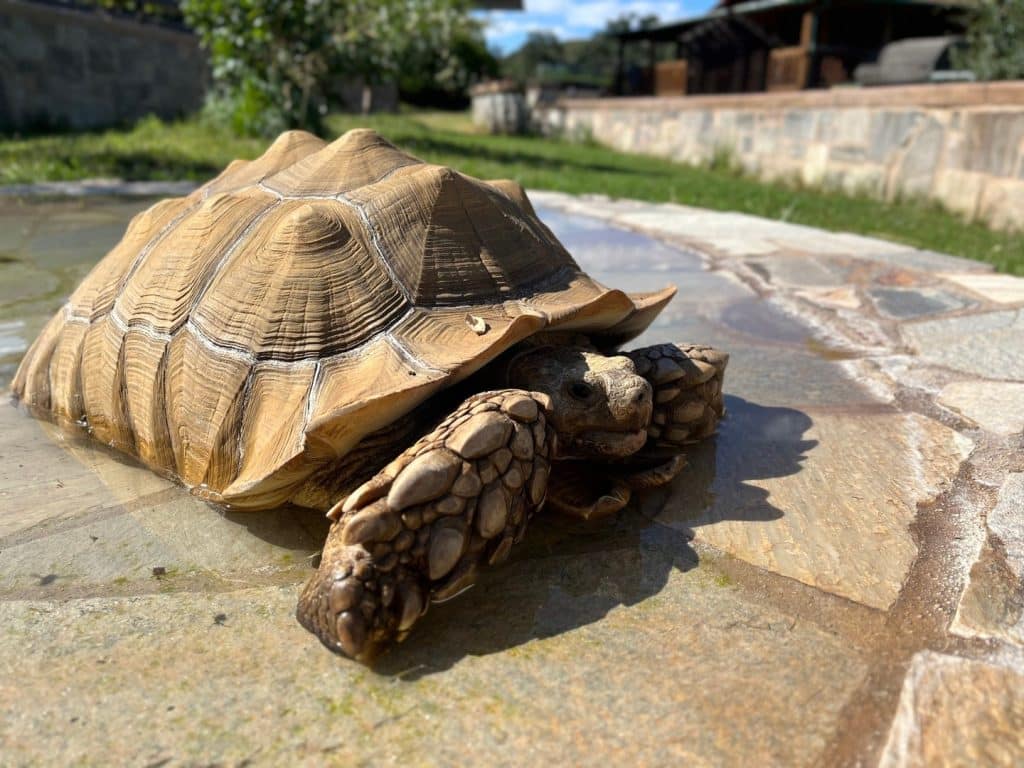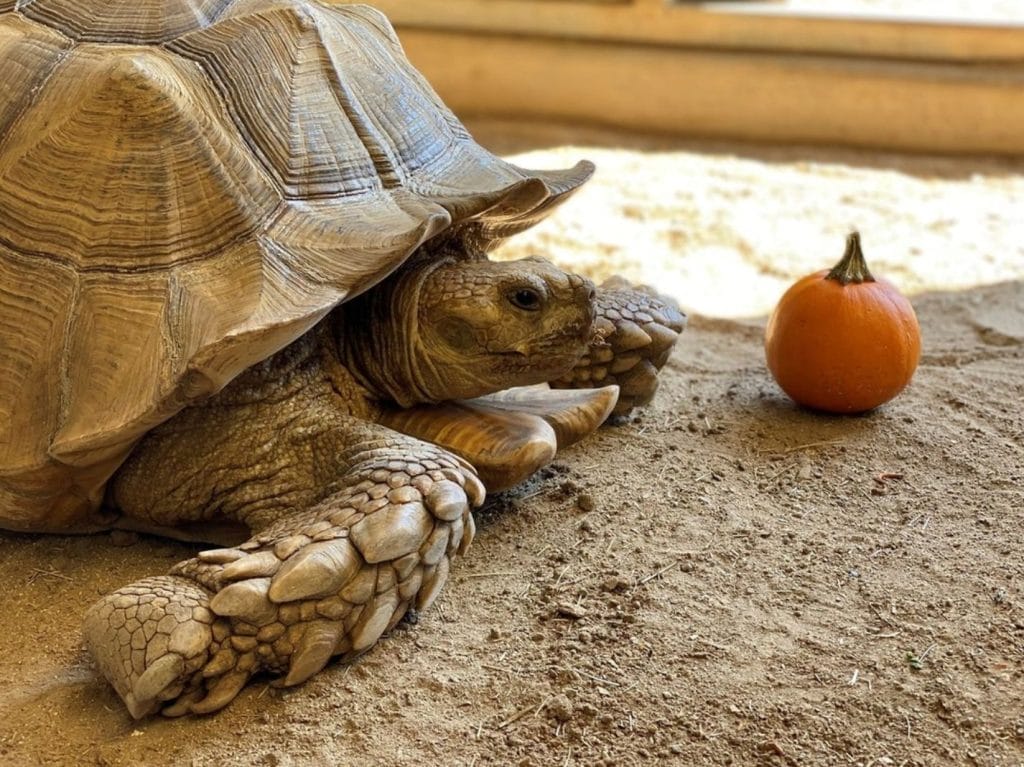
Sulcata tortoises have been on this planet for millions of years—long before humans, cars, or even the continents as we know them today. In fact, they're among the oldest living jawed vertebrates, tracing their lineage back through fossil records with barely a molecular blink. Their slow rate of molecular evolution has kept their design steady and successful, perfectly tuned to survive even the harshest conditions.
So when you look at Donashello (one of our residents), you're seeing the past in motion. He's part of a lineage that once walked with prehistoric mammals and outlived more evolutionary experiments than we’ll ever know.
The sulcata tortoise (Centrochelys sulcata), also known as the African spurred tortoise, is one of the most resilient and long-lived terrestrial reptiles on the planet. Literally, they have remained unchanged for over 100 million years, earning them the nickname "living fossils." They’re very large, ranking third after the Aldabra giant tortoise and Galapagos tortoise.

Native to the southern edge of the Sahara Desert, sulcatas have evolved a suite of unique traits that allow them to thrive in some of the world’s harshest conditions. Let’s explore some of their key characteristics:
Sulcata tortoise lifespan is among the longest in all land reptiles. They frequently exceed 100 years and, in some cases, reach up to 150 years. This extended longevity is attributed to their slow metabolic rate, low-stress lifestyle, and robust physiology.
However, their long lives also come with challenges—especially in captivity. Sulcata tortoises are one of the most commonly surrendered pets, often because their owners didn’t realize just how big, strong, and long-lived they’d become. Many outlive their original caregivers by decades, and few people are prepared for such a long-term commitment.
In the wild, they face threats too. Habitat loss from expanding agriculture and climate change continues to shrink their native range across the southern Sahara. Between the pet trade and the disappearance of wild spaces, these gentle giants need our protection—now more than ever.

As a species adapted to semi-arid and arid regions of Africa, sulcatas have evolved multiple mechanisms to endure extreme heat, intense sunlight, and prolonged drought.
Key adaptations include:
These traits are essential for survival in a biome where resources are scarce, and temperatures can swing dramatically from day to night.
Sulcatas are strict herbivores that rely heavily on high-fiber, low-protein vegetation. In their native range, their diet consists primarily of:
Their digestive systems are optimized for fermenting fibrous plant matter, which is processed in a specialized hindgut. This diet must be closely replicated in captivity to avoid complications such as pyramiding (abnormal shell growth), kidney damage, or obesity.

While often overlooked, ultraviolet B (UVB) exposure plays a crucial role in the health of sulcata tortoises. Like many reptiles, sulcatas require UVB radiation to synthesize vitamin D3, which in turn is essential for proper calcium metabolism.
Without sufficient UVB exposure, sulcatas are at risk of developing the metabolic bone disease, a painful and often irreversible condition. In outdoor environments, natural sunlight typically meets their needs. In indoor or temperate climates, however, supplemental UVB lighting (a heat lamp) is a necessity and must be carefully regulated to mimic the natural solar spectrum.
Proper lighting, combined with dietary calcium, ensures that sulcatas develop strong shells and skeletal structures—and that they maintain those systems as they age.
Donashello is special because he’s our very first shelled resident. He’s 20 years old and weighs about 100 pounds. He came to us after his former owners, an elderly couple, reached out for help. They loved him dearly but could no longer provide the care he needed. Since sulcata tortoises can live over 80 years in captivity (and even longer in some cases), they knew he needed a forever home that could commit to a lifetime of care. That’s why we stepped in.
We have created a unique space specifically for him. His new habitat will include everything a sulcata needs to feel right at home—burrows to dig, plenty of room to roam, and species-specific landscaping that mimics the dry, open spaces these tortoises are used to in the wild. Since sulcatas are natural diggers, having soft ground and plenty of shade and shelter from the heat to keep him cool and comfortable.
When Donashello arrived, we invited our members and supporters to help us name him. We held our first-ever “SHELLECTION,” and after a round of votes, the winning name was clear: Donashello! We couldn’t have picked a better fit—it’s charming, a little cheeky, and totally him.

As a herbivore, Donashello enjoys a diet full of dark leafy greens and fibrous plants—foods that keep him healthy and strong. Sulcatas don’t eat meat or fruit; their diet is all about grasses and greens (like hibiscus leaves, etc.), which are great for their digestion and shell development.
And here’s something amazing to think about: at just 15 years old, Donashello is still a child in tortoise years. With good care, he could be with us for the next 80 to 100 years or more. That’s why providing him with expert care, the right habitat, and ongoing enrichment isn’t just important—it’s essential.
We’re honored to give Donashello the loving, permanent home he deserves. And if you’d like to be part of his journey, we’d love your support. Every donation helps us complete his habitat and give him everything he needs to thrive for decades to come.
There are a few ways you can help us provide better care for Donashello and the other residents at LTB:
With your help, we can give this gentle giant a sanctuary where he can thrive for the rest of his (very long) life.


Ph: 619.659.8078
Fx: 619.659.8841
[email protected]
24402 Martin Way, Alpine, CA 91901